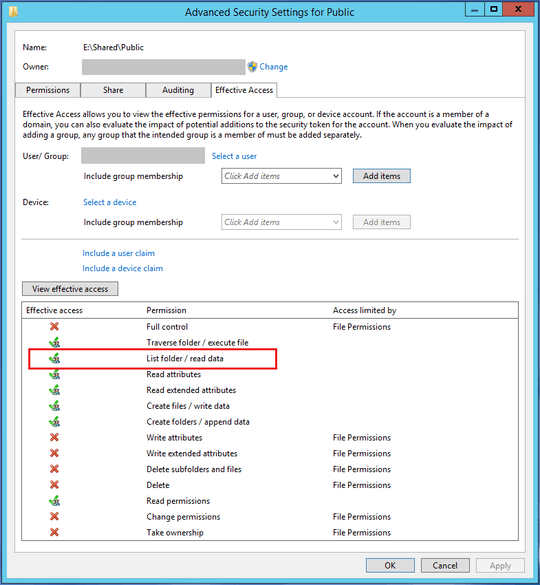0
1
We are using now Access-based Enumeration inside our AD server. It is very cool: share ONE folder and set the permissions and "BOOM!" works. But I have noticed that local Administators are seeing the folders that they don't have access to. How can I avoid that?
Local administrators, in our case, are privileges just given to certain people (ordinary users non-IT like managers and our IT trainees). Even they not having access to the contents, the list of folders is big and some users get confused.
I running Windows Server 2012 R2.

With ABE enabled, users will only see folders they at least have Read permissions to. Are these users Administrators on the server hosting the share, or on the client computers connecting to the server? – I say Reinstate Monica – 2017-04-09T00:45:30.367
Hi. For those users we give local administrator privileges inserting in the local group. – msmafra – 2017-04-09T00:50:15.277
yes, but on which machine(s)? It makes a huge difference. – I say Reinstate Monica – 2017-04-09T00:52:21.663
Inserted in each user's computer bu GPO or by hand. These users are limited to logon on their sector computers also. – msmafra – 2017-04-09T01:01:39.970
On the server, view the Security properties page of one of the folders, and in the Advanced button look at the Effective Access tab. There, put in one of these users and see what access they have. Post a screen shot please. – I say Reinstate Monica – 2017-04-09T01:03:21.527
Two problems:
Is there a merge of privileges? All users limitations summing with the local administrators privileges. – msmafra – 2017-04-09T01:07:32.920
Yes, privileges assigned at the root of a folder will be added to those assigned lower I the folders. Post the information whenever you can. I don't think the language will be a problem. – I say Reinstate Monica – 2017-04-09T01:09:44.500
I find it odd. the users are limited to their groups accesses in other words each sector has its group like finances, accountants, buyers etc. so, the folder finances is only visible and accessible by Domain Admins and the finances group and so on. Local administrators should not see it unless it is considering that the local Administrators group is the same as the local Administrators group inside each AD server. – msmafra – 2017-04-09T01:22:38.090
Viewing the Effective Access screen should clarify what permissions they actually have. – I say Reinstate Monica – 2017-04-09T01:23:46.603